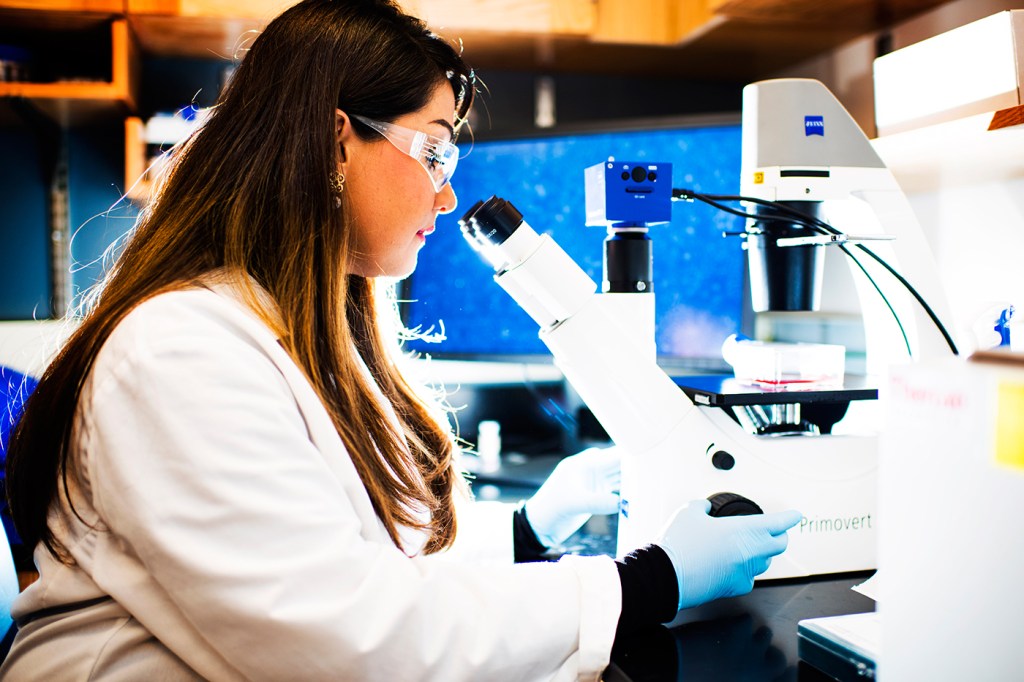Researchers develop surgical glue that seals wounds in seconds

When surgeons complete a successful lung operation, everyone should breathe a sigh of relief. But real relief may not come until weeks or even months later, when doctors remove the patient’s lingering sutures or staples. And that’s assuming there were no leakages, which can send a patient right back to the hospital.
Nasim Annabi, assistant professor of chemical engineering, has a better solution: a new type of surgical glue that could replace the need for staples and sutures altogether. Annabi is leading the research, which she and her colleagues from the University of Sydney and Harvard Medical School described in a paper published Wednesday in Science Translational Medicine.
The gel-like glue, called MeTro, is made from a human protein that has been modified to react to ultraviolet light. Researchers apply the glue to a wound, place it under UV light for a few seconds, and voilà—the wound is sealed.
MeTro is unlike anything currently available, Annabi said. It is highly adhesive, acting as a patch on lungs, hearts, or other organs. The gel’s elastic quality makes it ideal for tissue that requires flexibility, like an expanding lung. It can be fine-tuned to degrade at a pace specific to the amount of time an organ needs to heal. And because it’s made from a human protein, the glue has another valuable trait.
“We observed that this isn’t just a sealant, it actually helps with tissue regeneration,” Annabi said. For example, after a heart attack, the glue could be applied on damaged heart muscle to assist in regrowth.
Annabi’s previous research has shown the glue could be sprayed on skin to form a barrier over wounds and promote healing. For this new paper, researchers tested MeTro on the lungs of rats and found that it works much better than commercially available sealants and sutures, which don’t allow organ tissue to move naturally.
Annabi and her colleagues now plan to test MeTro over a longer period of time. After that, she wants to run clinical trials with humans. Within three to five years, Annabi said she thinks the glue will be available in hospitals.





